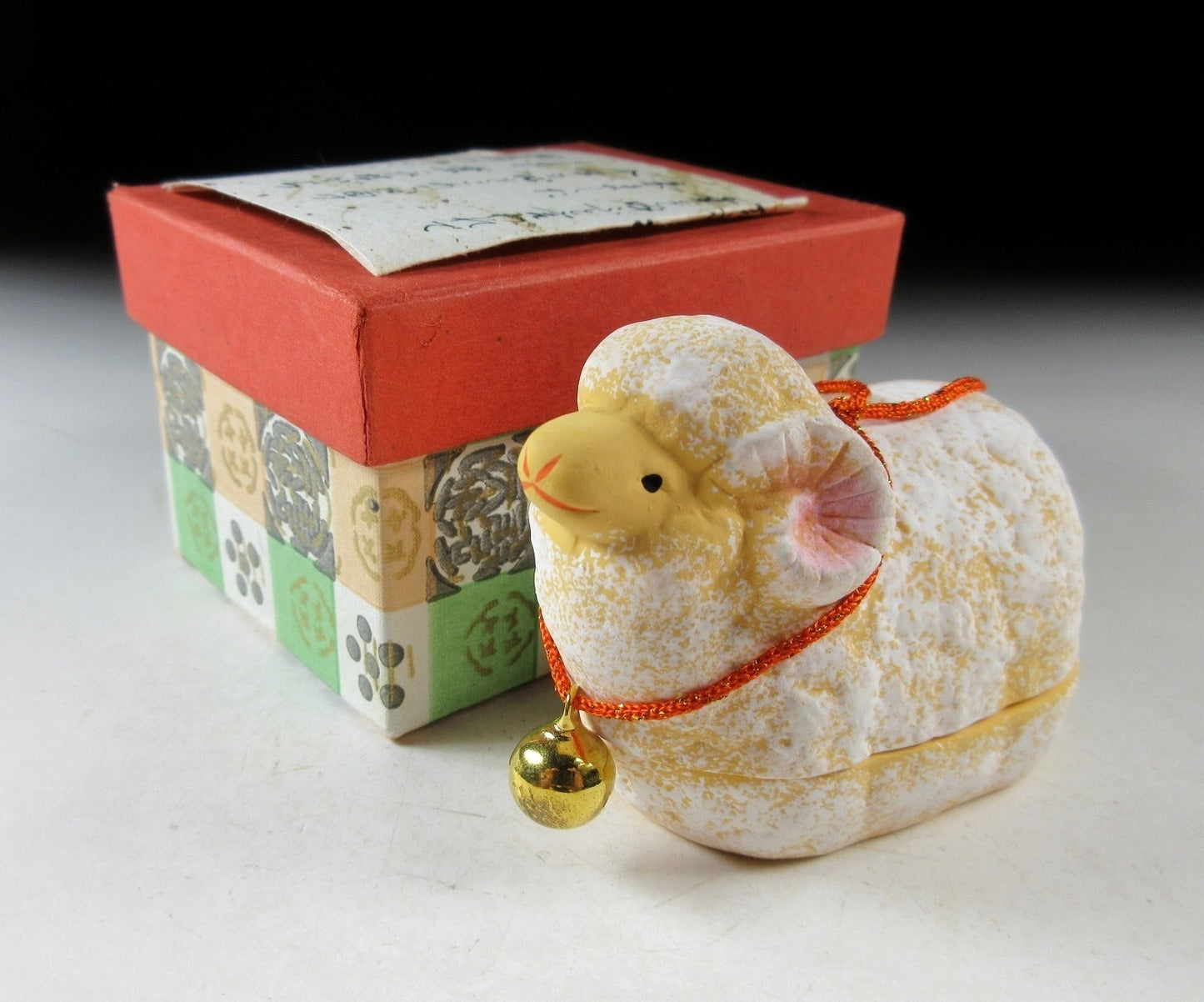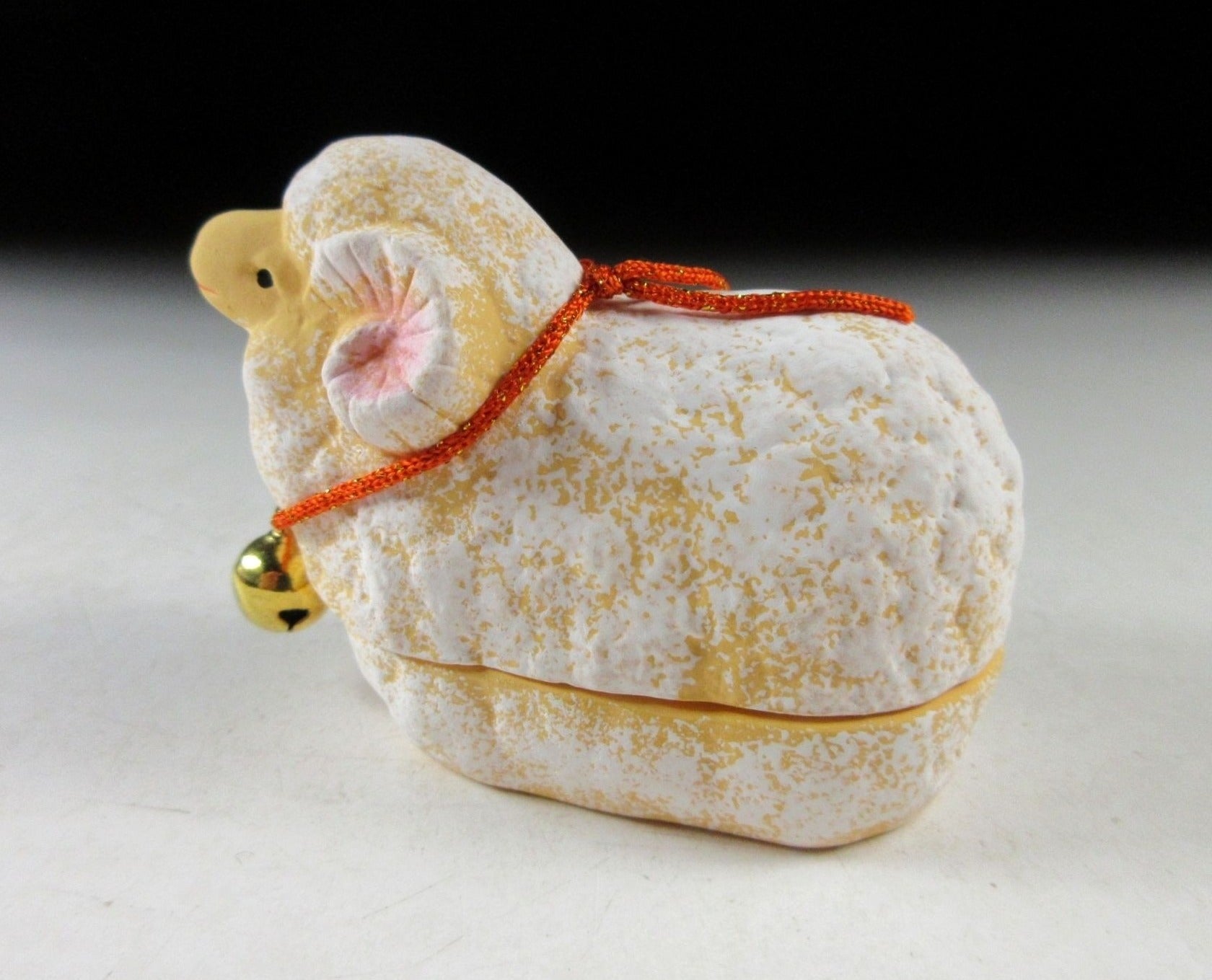Kominka Zakka
Heian Nishikizome III Year of the Sheep Kogo
Heian Nishikizome III Year of the Sheep Kogo
Couldn't load pickup availability
*SHIPPING OPTIONS VARY DEPENDING ON THE DESTINATION, PLEASE SCROLL TO THE END OF THIS LISTING FOR MORE DETAILS.
This listing is for an adorable Year of the Sheep kogo made around 20 years ago by doll master craftsperson Heian Nishikizome III. It is made from a mould and the exterior is painted to create the illusion of wool. There’s a small gold bell around the ram’s neck, and the interior features specks of gold flakes. Its size and shape is suitable for holding both woodchip and kneaded incense, although pottery kogo are typically used for kneaded incense during the cooler months. This piece was possibly made to commemorate the Year of the Sheep back in 1991. The stamp of the potter can be found on the bottom, and it comes with a paper storage box. It also comes with a small Japanese language profile paper.
Fujiwara Toshio (b.1956) is a Kyo-ware doll maker known by the name of Heian Nishikizome. After graduating high school he went to Hakata in Fukuoka for four years to study doll making techniques. In Hakata he received the Hakata Doll Exhibition Award twice, and in 1974 he returned to Kyoto and succeeded as the third generation master. In 1974 he received his first award in Kyoto. After this he received the Kyoto Municipal Governors Award twice, and the Kyoto City Mayor Award four times at the Kyoto Doll Exhibition sponsored by the Kyoto Doll Cooperative Association. Fujiwara specialises in making Hina Satsuki dolls, Imperial Palace dolls, court noble dolls, and Heian inspired dolls. **Fellow sellers, this information was researched by Kominka Zakka and CANNOT be used in your own listings.
Kogo are for holding incense during the tea ceremony. Kogo vary depending on the season. In summer wooden kogo are used for holding chips of incense wood, and in winter ceramic kogo are used for holding kneaded incense intended for the hearth. During the tea ceremony, incense is added to the charcoal fire during the charcoal-laying procedure.
Kyo-ware originated in the 17th century in Kyoto and features overglaze enamel pigments on a porcelain base. The porcelain base acts as white canvas, allowing for beautiful and superior quality designs to be painted. Kyo-ware artisans traditionally produced chawan and utensils for the tea ceremony, however contemporary potters specialize in tableware, tea ceremony items, incense holders, and okimono. Kyo-ware was designated as a traditional craft in 1977.
Sizes
Paper Box: H.5.7cm (2.2”) x 8cm (3.1”) x 6.6cm (2.5”)
Kogo: H.4.9cm (1.9”) x L.7cm (2.7”) x W.3.7cm (1.4”)
Condition
It’s in very good condition with no chips or cracks.
THESE ARE SHIPPING ESTIMATES BASED ON THE CURRENT GLOBAL SITUATION
**Germany, France, Greece, Spain, Poland, Austria, Slovakia, Lithuania, Slovenia: NO SHIPPING. Very strict and expensive packaging laws in place and we are not licensed to send products to these countries. We have no plan to register at this time because the process is in some cases very expensive and complicated, plus each country has its own set of regulations and application process.
**USA, UK, Canada, Australia, New Zealand, Switzerland, Norway: Airmail Small Packet (approx. 15-28 days). Combined shipping available up to 2kgs for Airmail Small Packet (please send us a message).
**Asia: Airmail Small Packet (approx. 15-21 days). Combined shipping available up to 2kgs for Airmail Small Packet (please send us a message).
**Central Asia, Middle East, South Africa, Brazil, Mexico: EMS Express 10-15 days.
**Russia: No shipping methods available.
Share
















